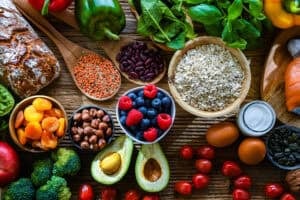SA’s food inflation rate surged to a 14-year high in March, although food prices eased globally, primarily due to the higher cost of production.

Consumers are paying more for food thanks to Eskom’s electricity crisis.
South Africans are drowning in a relentless wave of living cost increases and are in for another tough few months with food inflation in South Africa expected to remain high until the end of the next quarter, settling at 10% by the end of 2023.
Food inflation is the main contributor to South Africa’s escalating consumer price index inflation rate, increasing the probability of another interest rate hike and economists agree that the blame can be squarely placed at the door of Eskom’s escalating load shedding crisis, Neil Roets, CEO of Debt Rescue, said.
According to Agricultural Business Chamber chief executive Theo Boshoff, the potential impact of stage five to six rolling blackouts will be devastating for food security.
“The cost of rolling blackouts has the biggest impact on agri-businesses. The average agri-business spends money on diesel generators at a huge additional cost with a knock-on effect on food prices. The impact of all of this is that food becomes more expensive and not because of physical food shortages,” he added.
Intensified rolling blackouts also increased overhead costs for many retailers across the country, whether it be the need to buy diesel for their generators or investments in backup power systems.
South Africa’s biggest retailers, including Woolworths, Shoprite, Pick n Pay, Spar and Food Lovers’ Market, reported a collective spend of over R2.4 billion to mitigate the effects of load shedding over the past year and these rising input costs inevitably get passed on to consumers.
ALSO READ: Food sector growth attributed to higher food prices… not higher volumes
Power outages add substantial cost to food
Roets said the persistent record-setting power outages are adding substantial costs across food value chains, as Eskom heads for the worst year on record in 2023.
“As always, this means that it will become tougher for consumers, especially from low-income communities, to afford adequate food to feed their families.”
He said while the repo rate reprieve in July was welcome, it is cold comfort to consumers who are still spending extra cash to meet their grocery needs.
LISTEN: Unretirement: why are older people returning to work?
A recent Debt Rescue survey revealed that two-thirds of the nation now struggle to put enough food on the table to feed their families, with 66% of South Africans saying they had to skip a meal in recent months as they could not afford three meals a day.
Against this backdrop, the news the average price of the household food basket increased by R25.48 (0.5%), from R5 056.45 in June 2023 to R5 081.94 in July 2023, is akin to rubbing salt into an open wound.
Even more disturbing is items which increased in price by 5% or more are items such as white sugar (7%), potatoes (8%), eggs (5%) and fish (7%), all staple foods needed to serve up a decent and nutritious meal.
“People already buy cheaper and less nutritious food items just to serve up enough food on the table. Over the long term, this can have a potentially crippling impact, especially on families with young children, whose nutritional needs are no longer met,” Roets warned.
He said one of his greatest concerns is people have to buy food on their credit and store cards just to make it through the month, driving people to not be able to repay their debts.






